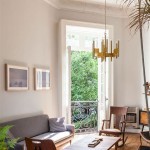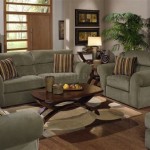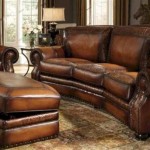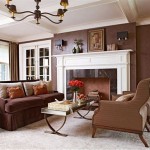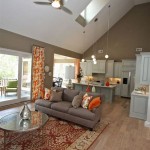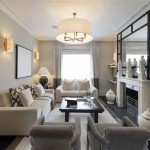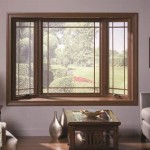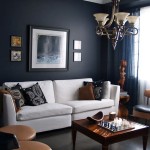Selecting the Ideal TV Unit for Your Living Room
The television unit, often referred to as an entertainment center or media console, serves as a focal point in many living rooms. Beyond its practical function of supporting a television, it contributes significantly to the overall aesthetic and organization of the space. Choosing the right TV unit involves considering several factors including size, style, functionality, and material. A well-chosen unit can enhance the viewing experience, provide ample storage, and complement the existing décor.
The evolution of television units has mirrored the developments in television technology itself. Early models were often simple stands, designed primarily to elevate the bulky cathode-ray tube (CRT) televisions of the time. As televisions became thinner and lighter with the advent of LCD and plasma screens, TV units evolved to incorporate more storage and design elements. Modern TV units are available in a vast array of styles, from minimalist floating shelves to elaborate wall-mounted entertainment centers, reflecting diverse design preferences and technological advancements.
Determining the Appropriate Size and Dimensions
One of the primary considerations when selecting a TV unit is its size. The dimensions of the unit should be proportional to both the size of the television and the overall dimensions of the living room. A unit that is too small may appear insignificant and fail to provide adequate support, while one that is too large can overwhelm the space and impede movement.
To determine the optimal size, begin by measuring the width of the television. The TV unit should ideally be at least as wide as the television, and preferably wider, to provide a stable base and create a balanced visual appearance. For larger televisions, consider a unit that extends several inches beyond the width of the screen on each side. This not only enhances stability but also provides space for decorative items or speakers.
The height of the TV unit is another important factor. The optimal viewing height for a television is generally considered to be at eye level when seated. To achieve this, measure the distance from the floor to the midpoint of the television screen. The height of the TV unit should be calculated to ensure that the center of the screen aligns with this eye-level measurement. Adjustable mounts or risers can be used to fine-tune the height if necessary. A unit that is too low may strain the neck, while one that is too high can be visually distracting.
Depth is also a crucial dimension to consider. The depth of the TV unit should be sufficient to accommodate the depth of the television, as well as any accompanying equipment such as cable boxes, DVD players, or gaming consoles. It is important to allow adequate space for ventilation to prevent overheating of electronic devices. Consider the depth of existing wall outlets and cable connections to ensure that the unit can be positioned flush against the wall. A unit that is too shallow may result in cables and equipment protruding from the back, creating a cluttered and unsightly appearance.
In smaller living rooms, it may be necessary to opt for a compact TV unit or a wall-mounted shelf to maximize space. Floating shelves can provide a minimalist and space-saving solution, while corner units can effectively utilize otherwise unused areas of the room. In larger living rooms, a more substantial entertainment center with ample storage and display space may be more appropriate.
Exploring Different Styles and Designs
The style of the TV unit should complement the overall aesthetic of the living room. There are numerous styles available, ranging from traditional to modern, rustic to minimalist, and everything in between. Selecting a style that harmonizes with the existing décor can create a cohesive and visually appealing space.
Traditional TV units often feature ornate details, such as carved moldings, raised panel doors, and antique hardware. These units are typically constructed from solid wood, such as oak, cherry, or mahogany, and finished with a rich stain or lacquer. Traditional styles often incorporate enclosed cabinets and drawers for concealed storage, as well as open shelves for displaying decorative items. This style is well-suited for living rooms with a classic or formal design.
Modern TV units are characterized by clean lines, minimalist designs, and a focus on functionality. These units often feature sleek surfaces, geometric shapes, and a neutral color palette. Materials such as glass, metal, and laminate are commonly used in modern TV units. Open shelving and floating designs are popular choices in modern styles, creating a sense of spaciousness and lightness. This style is ideal for contemporary or minimalist living rooms.
Rustic TV units evoke a sense of warmth and natural beauty. These units often feature reclaimed wood, distressed finishes, and industrial hardware. Rustic styles may incorporate exposed beams, barn door accents, and natural textures. This style is well-suited for living rooms with a farmhouse or industrial design.
Other styles to consider include transitional, which blends elements of traditional and modern design, and eclectic, which combines different styles and eras to create a unique and personalized look. When selecting a style, consider the existing furniture, color scheme, and architectural features of the living room. It is also important to consider personal preferences and lifestyle. A TV unit should not only be aesthetically pleasing but also functional and practical for everyday use.
The design of the TV unit can also impact the overall ambiance of the living room. A well-designed unit can serve as a focal point, drawing attention and creating a sense of visual interest. Consider incorporating features such as built-in lighting, accent panels, or decorative hardware to enhance the design. The arrangement of storage compartments and display shelves can also contribute to the overall aesthetic. A symmetrical arrangement can create a sense of balance and order, while an asymmetrical arrangement can add visual interest and dynamism.
Assessing Storage and Functionality Requirements
Beyond aesthetics, the functionality of the TV unit is a critical consideration. The unit should provide adequate storage for media equipment, accessories, and other items while also offering practical features that enhance the viewing experience. Assessing storage and functionality requirements is essential to selecting a TV unit that meets individual needs and preferences.
Consider the number and type of media devices that need to be accommodated. Common devices include cable boxes, DVD players, gaming consoles, and streaming devices. Ensure that the TV unit has sufficient shelves or compartments to house these devices, with adequate space for ventilation to prevent overheating. It is also important to consider the size and shape of the devices to ensure that they fit comfortably within the designated spaces. Adjustable shelves can provide flexibility in accommodating devices of different sizes.
Assess the storage needs for media accessories, such as remote controls, cables, and DVDs. Drawers, cabinets, and open shelves can be used to organize and store these items. Consider the accessibility of storage compartments. Drawers and cabinets with soft-close hinges can provide convenient and quiet access, while open shelves allow for easy retrieval of frequently used items. Cable management systems, such as cord organizers and grommets, can help to keep cables tidy and prevent them from becoming tangled or visible.
Consider incorporating additional features that enhance the functionality of the TV unit. Built-in lighting can create a warm and inviting ambiance, while also providing task lighting for adjusting settings or accessing equipment. Swivel bases can allow the television to be easily rotated for optimal viewing angles. Integrated sound systems can provide enhanced audio quality without the need for separate speakers. Some TV units also include features such as electric fireplaces or charging stations for mobile devices.
Think about how the TV unit will be used beyond just entertainment. Will it also serve as a display space for books, artwork, or decorative objects? Open shelves and display niches can be used to showcase these items, adding personality and character to the living room. Consider the weight capacity of shelves and cabinets to ensure that they can safely support the items being stored or displayed.
Consider the ease of access to electrical outlets and cable connections. The TV unit should be positioned in a location that allows for convenient access to outlets and connections. Consider using surge protectors and power strips to protect electronic devices from power surges. Ensure that cables are properly labeled and organized to facilitate troubleshooting and maintenance.
The selection of a TV unit for the living room requires careful consideration of size, style, and functionality. By assessing these factors, individuals can choose a unit that not only supports their television but also enhances the overall aesthetic and organization of their living space.

35 Modern Tv Unit Designs To Make Your Living Room Look Great Halfpricefurniture

13 Tv Unit Furniture Designs To Elevate Your Living Room Blenheim Bedroom

Discover The Top 10 Tv Stand And Wall Unit Design Ideas For 2024 2025 Hd Interiors

100 Modern Living Room Tv Cabinet Design 2024 Wall Unit Home Interior Decorating Ideas 2

5 Tv Unit Designs For Living Room Beautiful Homes

100 Modern Tv Unit Design 2024 Living Room Cabinet Home Interior Wall Decorating Ideas P7

Tv Wall Units Design Ideas Living Room Decoration Cabinets 2024

100 Stylish Tv Unit Designs For Modern Living Rooms 2025 Wall Cabinets Home Interior Ideas

Modern Luxury Tv Unit Wall Design Simple Wooden Interior

New Design Luxury Modern Home White Divider Wood Tv Cabinet Living Room Wall Unit Meuble Cable Management Made In Com

